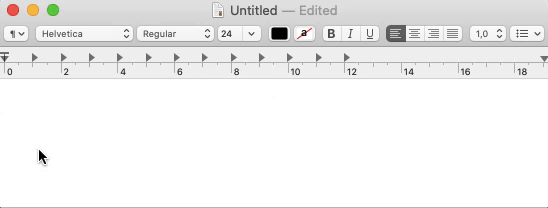

Words which require the “e with acute” are all the oxytone words composed with the conjunction “ché”:Īnd also the words composed with “re” (king) and “tre” (three): Some people uses E' (with an apostrophe) as the capital form of è, but this is wrong usage, descending from the typewriter era, because typewriters didn't have uppercase accented letters. Loanwords such as the French “équipe” are of course an exception. Note that the “e with acute” is capitalized only when the whole word is capitalized, because the only Italian word that starts with “e with grave” is the monosyllabic verbal form “è” (present indicative, third person singular, of “essere”). With the vowel e, either the acute or the grave accent is used, to denote its closed or open pronunciation \`e \'e Some publishers, however, prefer to use an acute accent on i and u. According to the most widespread usage, only the grave accent is used on a, i, o and u \`a \`i \`o \`u In the language, it represents the nasalized near-open front unrounded vowel () sound, for example in the word shãsa, which means chance.Italian uses two kinds of accents, grave and acute. The letter is also used in Belter Creole, a constructed language made by Nick Farmer for The Expanse television sci-fi series. It is also used as a phonetic symbol in the International Phonetic Alphabet, where its lower case (ã), represents the nasalized open front unrounded vowel.įormerly, the letter was also used in the Greenlandic to represent long open front unrounded vowel () next to a geminated consonant, but now it is replaced with Aa. In Vietnamese, it is pronounced as long open front unrounded vowel () in a high breaking-rising tone. In Aromanian, it is pronounced as mid-central vowel () or close central unrounded vowel (). In Guaraní and Taa, it is pronounced as nasalized open front unrounded vowel ().

Its the 3rd letter of the Kashubian alphabet. In the dialect present in counties of Puck and Wejherowo, it is pronounced as nasalized open-mid front unrounded vowel (). In Kashubian, the letter is generally pronounced as nasalized open front unrounded vowel ().

It also appers as a part of the diphthongs ãe, pronounced as /ɐ̃j̃/, and ão, pronounced as /ɐ̃w̃/. In Portuguese, it represents a nasal near-open central vowel (), though it varies from near-open to mid-central vowel according to dialect. In the past, it was also used in Greenlandic. It is used in Portuguese, Guaraní, Kashubian, Taa, Aromanian, and Vietnamese. For the distinction between, / / and ⟨ ⟩, see IPA § Brackets and transcription delimiters.Ī with tilde ( majuscule: Ã, minuscule: ã) is a letter of the Latin alphabet formed by addition of the tilde diacritic over the letter A. For an introductory guide on IPA symbols, see Help:IPA. This article contains phonetic transcriptions in the International Phonetic Alphabet (IPA).


 0 kommentar(er)
0 kommentar(er)
